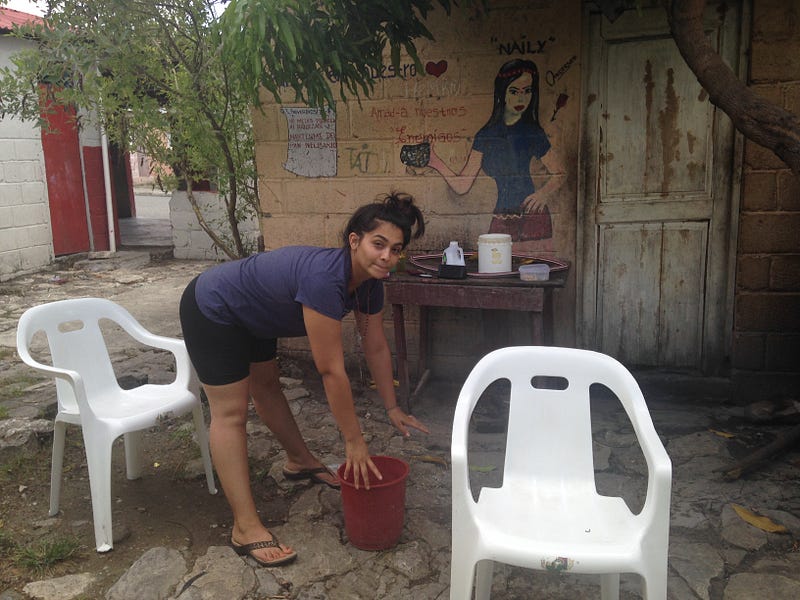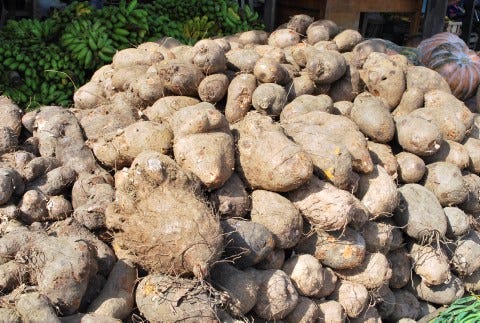It’s about
noon on a Tuesday and me and my friend Chulo are sitting in my galleria on a couple of new, shiny white
plastic chairs I had just bought with my Peace Corps move-in allowance. There’s
no school because the teachers in my school wanted to plan a surprise birthday
party for the orientadora. Yeah,
that’s right. School was canceled for a
birthday party. Chulo is my age exactly, 24. But he likes to remind me
frequently that he’s five months my elder. He’s tall and slender and has
flawless dark skin.
[Side Bar:
How do Dominicans have such excellent skin? If I ate chips for breakfast and
suckers for dinner and drank two tablespoons of water a day like they did, I
would be one large, walking pimple.]
We’re
talking about Dubai for the umpteenth time this week. According to Chulo, the
roads are made of porcelain and everything is plated in gold leaf. Real
luxury…kind of like in the States he mentions. We’re talking about this
luxurious Middle Eastern paradise because
Chulo mentions wanting to live in the States, and me, the valiant volunteer, am
trying to quitar this unfounded
obsession with my complicated country.
He hits my privileged-ass with: “you come from a place that lives
ten-times better than we live here.”
I can’t necessarily argue, but I don’t necessarily agree. I tell him that
while we may have 24-hour luz, safe
running water and access to things like hospitals, Americans don’t have time for the things that matter. We work all day,
bouncing from one commitment to the next; when we return home after a long
day all we can muster is a Netflix marathon until we fall asleep. The weekends
we’re equally as exhausted. A short meeting
is a major selling-point; we know efficiency like the back of our hand. “Hey,
how have you been?” “Oh, you know, work’s so crazy. I’ve just been really busy
with work…but you know...it’s ok.”
Even though our intensive, three-month long
Peace Corps training does its best to prepare us for the realities of working
in a cultural context different to our own, the first committee meeting I led
was…awkward. Awkward in that I couldn’t get my inner American efficiency to
chill the hell out and jibe with the suave
Dominican business rhythm. The meeting faded into conversation about the rain, about their kids,
about where Casimira got her head scarf. I stumbled my way around the
meeting-turned-hang-out-sesh and tried desperately to give everyone a quick
overview and assign out some action items. That’s not what they wanted.
They were genuinely enjoying the time we were spending together. My asshole American self was trying to get
everyone to quick hurry up and leave while they were laughing, sharing jugo remedies and discussing last
night’s heated game of Dominoes.
Time is different here. It’s less of a scarce
resource that must be squirreled away and more of a bountiful possession to be
spent on drinking hot coffee with your friends and visiting your family at
lunch time. You
don’t have to quick rush from one thing to the next in order to accumulate ten
minutes here to add to your twenty minutes there to sum up and spend on a half
an hour grabbing a drink with a friend.
The capitalist, consumerist American inside of me who’s been reading the Economía tab on BBC Mundo every morning interprets this as low opportunity cost. If
you don’t remember your 300+ person Econ 101 course from sophomore year,
“opportunity cost refers to a benefit that a person could have received but
gave up to take another course of action…” –My sister’s Microeconomics
textbook.
In the U.S.
we use our bountiful money resource to save on our scarce time resource. Automatic dishwashers, people to cut our
grass, washing and drying machines, valet parking, etc. In the DR, people use
their bountiful time resource to save on their scarce money resource. They wash
their clothes with a cepillo, they
cook beans completely from scratch for nearly each meal and they fix every
single thing that breaks with a chín chin
de coqui.
When I first arrived to country I remember getting anxious when I wasn’t doing something my American brain determined as “productive”. If I sat in a white, plastic chair too long, my mind would become haunted with vivid images of my to-do list. A small post-it of action items would pop up on my left shoulder and whisper in my ear things like “3. Email Professor Young”, “12. Finish Monthly Report”. Eventually I began to calm my inner time-obsessed precisionist by training my brain to think “Literally what else would I be doing right now?” My life began to take on a low opportunity cost. I learned to value less those imagined tasks that I once thought should govern my life and value more what was happening in the moment. I’m not giving up anything by playing a third straight hour of Dominoes with my neighbors because “literally what else would I be doing right now?”.
Opportunity Cost also applies to decisions. There’s this famous social science study on marmalade. The first group of people was directed to choose a flavor of marmalade from a grocery store isle which had dozens of options. The second group was directed to choose from a much smaller selection. The groups were later asked to rate their marmalade satisfaction. Group two, the people with less choices, reported being significantly more satisfied with their selection. Their minds were focused on enjoying the strawberry jam they put on their morning toast and not on the organic fig preserves that were right next to the strawberry jam that they had on their afternoon peanut butter and jelly sandwich. Less choices means your mind isn’t thinking about what it’s missing out on. When I bring home mustard my local colmado, I’m not thinking about how much I want Grey Poupon Wholegrain Mustard, I’m fucking psyched that my colmado had mustard. “Literally what other mustard would I be eating right now?”
This ‘low opportunity cost life’ has been
allowing me to disfrutar without
thinking of what I’m missing out on. Spending your bountiful time in the moment
with people you care about takes priority. Can I judge cancelling school in
order to surprise a valued work companion on their birthday? (Well yes,
American work culture still permeates each and every thought that passes my
mind. Contradictions. Maybe I’m more patient with it now.)
A couple
hours have passed since me and Chulo have started talking. We’ve migrated from
my shiny, white plastic chairs to the weathered yellow chairs under the shade
of my community’s main colmado. His
bright orange, long-sleeve shirt contrasts with the lush green backdrop of chinola vines crawling up the red side
wall of the colmado. The conversation
drifts back to Dubai and the gold-plated lamp posts, which apparently exist.
He’s describing the lujo of
cleanliness, public porcelain water fountains, of all gold everything. Fluffy
bath robes and hot showers instead of cold bucket baths. Air conditioning and
Lamborghinis. He kind of stops
mid-sentence and looks up at me from his yellow gorra. “Luchia--don’t get me wrong, you’re still from a lujoso place where you live ten-times
better than here…but you know what? Our lujo
is that we have time for our family and friends.”
Shout-out
to Chulo for teaching me just as much about my own culture as he does about
Dominican culture.














